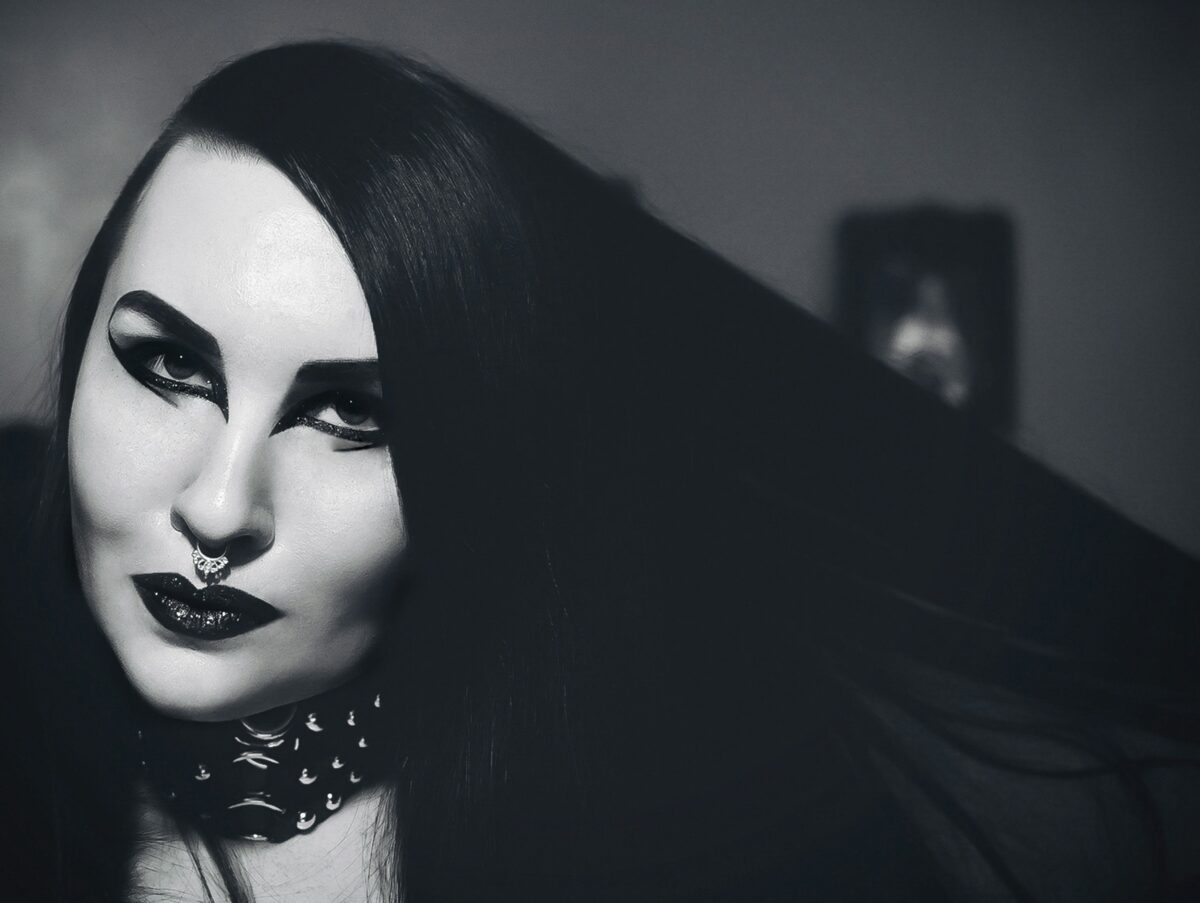Goth makeup is an integral part of goth culture and an art form in itself. Eric Draven from “The Crow,” Lydia Deetz from “Beetlejuice” and Abby Scuito from “NCIS” are all quintessential examples of goth characters in pop culture who share that dark, bold and graphic look on screen. Many people look at these characters and can admire how cool they look but would never attempt the look themselves. But what if you did?
You have likely noticed the intricacy of goth makeup. Maybe you admire the sharp and pristine eyeliner or the flawlessly applied foundation, sculpted out to perfection. The goth look is iconic and the skill speaks for itself.
“I love how extreme it can be; it’s definitely an art form. I don’t think I could ever pull it off though…” Isabella Brotton said. She’s a UNC-Chapel Hill student and “no-makeup makeup” wearer. No-makeup makeup has been a recent trend since the end of the pandemic which includes minimal makeup that aims to only highlight your natural features. A typical no-makeup makeup routine goes something like this: mascara, brow gel, lip gloss and cream blush! Simple and effective.
A common struggle for makeup-wearers is eyeliner, which happens to be a key component to the gothic look. Trying out a heavier look can allow for more room for error. If you mess up, you can keep adding until you get it right. Like with any skill, practice is necessary. Practicing a gothic, graphic liner can help improve your steadiness and allow you to experiment with angles and length of your eyeliner — without the pressure of needing to achieve perfection.
“It’s definitely hard for me,” Lauren Olarte, a UNC-CH student who typically leans toward the natural “clean girl” makeup look, said. “I definitely think I could learn from experimenting with goth makeup. It would definitely help with eyeliner and learning different application techniques.”
Contour is another defining aspect of gothic makeup. Contouring is a bit of a controversial topic in the beauty community because there is no general consensus on what to do. Some routines include a complete outline of the face, while others opt for simplistic dots of contour to blend out. Not to mention, the ever challenging quest to find the correct shade to create shadows with. Gothic makeup has a unique and rather elementary approach to the debacle: using gray or black shadow. This method is indicative of the basics of shadows in art. Where you want depth, you apply dark shadow or cream. Gothic makeup is rather sharp and precise, and this remains true for contour as well. Allowing yourself to toy with the natural shadows of your face with such stark contrast, such as using black shadow, can enable you to envision the placement and depth of your contour in future use with your everyday products.
“It can get so confusing with all the different components. One tutorial says this, while another says that,” Bailey Biggs, an N.C. State student, said. She keeps her day-to-day makeup minimal but frequently dabbles in a darker look. “I think the sharp look you see in goth makeup is similar to ‘the facelift’ look everyone tries to achieve with everyday contour.”
As previously stated, this style of makeup is very bold. It’s not always black and white though — many goth looks utilize a pop of color to capture your attention. For this reason, gothic makeup products tend to be highly pigmented, carefully formulated and worth every penny.
Some indie/small-business makeup brands that are adored by the goth community include Necromancy Cosmetica, Vampyre Cosmetics and Lethal Cosmetics.
As someone who does a lot of alternative makeup, I found that when I began my journey into makeup artistry, experimenting with looks that “aren’t for me” broadened my horizons and increased my confidence in my skills and appearance. Hopefully, this article can persuade you to try new things!
- Alternative Makeup - January 28, 2024

